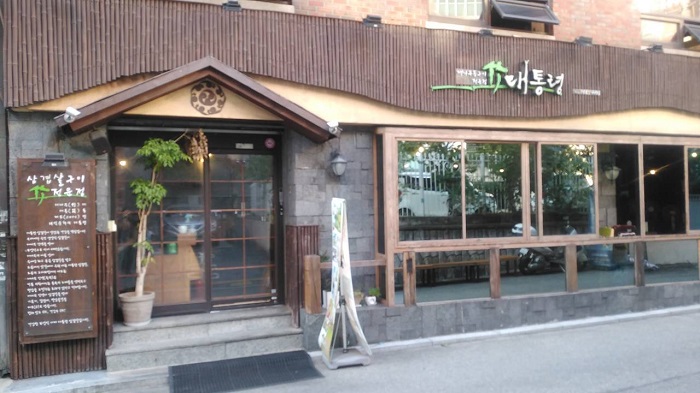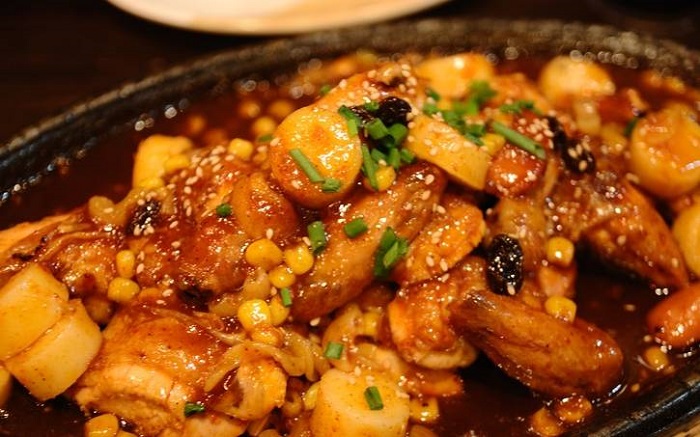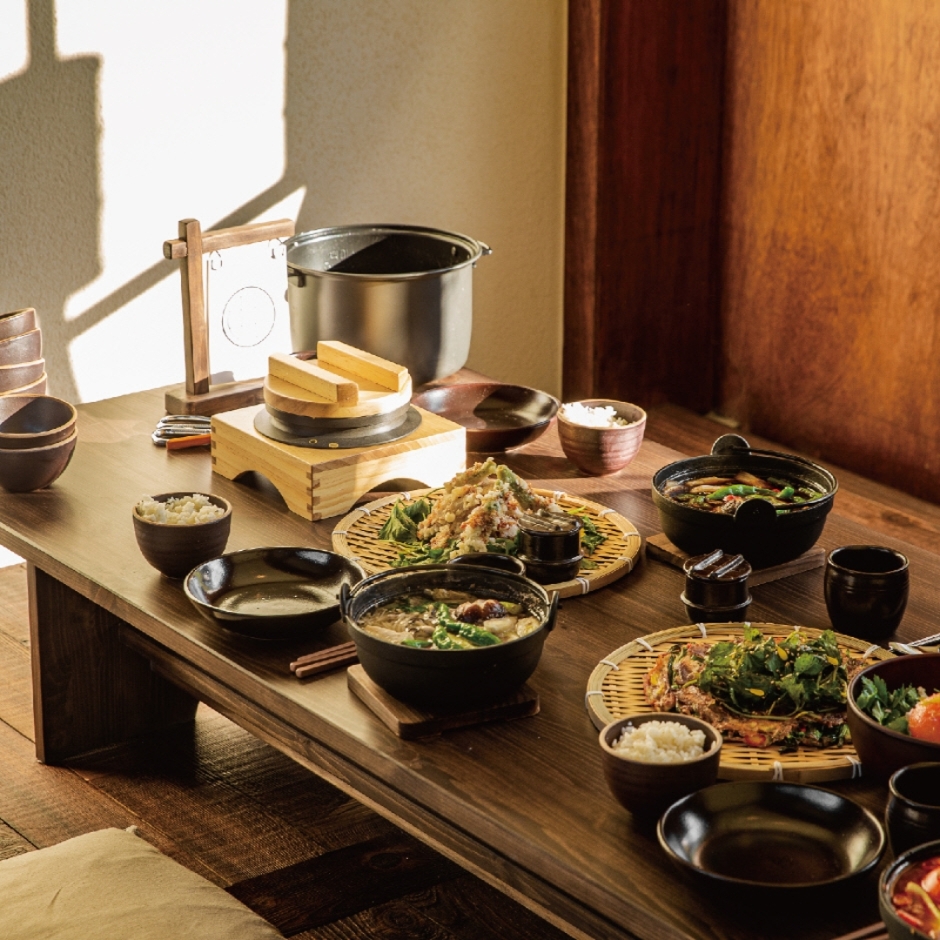Leeum, Samsung Museum of Art (삼성미술관 리움)
2.8Km 2022-12-15
60-16, Itaewon-ro 55-gil, Yongsan-gu, Seoul
+82-2-2014-6901
Leeum, Samsung Museum of Art, exhibits traditional and modern art works by Korean and international artists. The museum itself is just as fascinating as the art works on display, since the museum's three buildings were designed by internationally renowned architects Mario Botta, Jean Nouvel, and Rem Koolhaas.
MUSEUM 1 houses traditional Korean art, such as calligraphy, paintings, ceramic arts, and metal craftwork, while MUSEUM 2 displays modern and contemporary art by both Korean and international artists.
Daetongnyeong (대통령)
2.8Km 2021-03-27
12-1, Daehak-ro 14-gil, Jongno-gu, Seoul
+82-2-766-4405
A store specializing in Samgyeopsal aged in bamboo cans. The best menu at this restaurant is grilled pork belly. This Korean dishes restaurant is located in Jongno-gu, Seoul.
Olive Young - Dongmyo Station Branch [Tax Refund Shop] (올리브영 동묘앞역)
2.8Km 2024-04-17
37-1, Jibong-ro, Jongno-gu, Seoul
-
Live Fusion Gukak Music Performance Fanta-Stick (판타스틱)
2.8Km 2020-04-03
146, Daehak-ro, Jongno-gu, Seoul
• 1330 Travel Hotline: +82-2-1330 (Korean, English, Japanese, Chinese) • For more info: +82-2-3143-5959
Heart-beating sounds of powerful percussion rhythm and Heart-filling melodies
of beautiful Gukak!
Story of Korea with Korean traditional instruments;
Dae-guem, Hae-geum, Gayaguen, and A-jaeng. When Fanta-Stick’s beating starts,
your heart-beat will go up to the highest with the percussion sounds. Modern
interpretation of Gukak based on tradition. Guaka is no longer boring. Experience
new Korea.
* Point 1) Exciting Live Battle show between the Percussion family and the
Gukak family!
- 100% Live Gukak performance that you can’t take your eyes
off.
- The spirit of fusion Gukak composed by Kim, Baekchan; a music director
of movies called ‘A Frozen Flower’ and ‘Blades of Blood’.
* Point
2) Collection of all representative contents of Korea
All the Korean representative
contents in one performance! Percussion, fusion Gukak, Comedy, Korean traditional
instruments, Korean traditional performances and so on.
* Point 3) Performance
only for audiences and with audiences
An interactive performance made with
audiences and performers together.
* Point 4) Fun! Main reason for watching
a performance
Have fun with an exciting percussion performance and fill
your heart with beautiful fusion Gukak performance.
Owl Museum (부엉이박물관)
2.8Km 2022-09-19
143, Bukchon-ro, Jongno-gu, Seoul
+82-2-3210-2902
The Owl Museum is filled with over 2,000 pieces of owl-themed arts and crafts collected from all over the world by the owner. Renovated from a house, the museum has a feel of an antique café as the owner offers a cup of coffee or tea to visitors. Located near the city, those interested in owls should stop for a view and a drink. Various stories of how the collection was gathered as well as information on owls are also interesting.
Beer Ok (비어오크)
2.8Km 2021-03-29
151, Daehak-ro, Jongno-gu, Seoul
+82-2-745-0087
It's near the university, so it's a place frequented by many young people. This Korean dishes restaurant is located in Jongno-gu, Seoul. The representative menu is rotisserie chicken.
Woomoolzip Changsin Branch (우물집 창신점)
2.8Km 2023-08-29
200, Changsin-gil, Jongno-gu, Seoul
+82-507-1318-7500
Woomoolzip specializes in hot pot and hot stone pot rice meals. Various vegetables are cooked on oil made after cooking Korean beef brisket for a taste that is sure to please. With a motif of a well, the design of the restaurant fits beautifully with nature.
Seoul Hyochang Park (서울 효창공원)
2.8Km 2024-07-09
177-18 Hyochangwon-ro, Yongsan-gu, Seoul
+82-2-2199-7608
Hyochang Park covers 122,245 square meters spanning across Hyochang-dong and Cheongpa 2-dong. It is a historic landmark that once contained several royal tombs, and was known at that time as Hyochangwon. The cemeteries that were originally located in Hyochangwon belonged to Crown Prince Munhyo, King Jeongjo’s first son who died at the age of five; Royal Noble Consort Uibin of the Seong Clan, King Jeongjo’s royal concubine and Crown Prince Munhyo’s mother; Royal Noble Consort Sugui of the Park Clan, King Sunjo’s royal concubine; and her daughter Princess Yeongon. The royal tombs were moved to Seooreung Tombs in the waning months of the Japanese colonial period. The Japanese empire began the development of Hyochangwon into a park in 1924, and the Japanese governor-general officially assigned the site as a park in 1940.
Presently, several of Korea’s greatest leaders are buried in Hyochang Park. The remains mostly belong to independence activists including Yoon Bong-gil, Lee Bong-chang, and Baek Jeong-gi, whose graves are collectively known as Samuisa Tomb. A statue of Lee Bong-chang has been built in the graveyard. Among the other patriotic martyrs who are interred in the park are Kim Gu and some of the key figures of the provisional government such as Lee Dong-nyeong, Cha I-seok, and Cho Seong-hwan. An ancestral shrine named Uiyeolsa has been built along the main gate and holds the portraits of the deceased independence activists.


![Olive Young - Dongmyo Station Branch [Tax Refund Shop] (올리브영 동묘앞역)](http://tong.visitkorea.or.kr/cms/resource/87/2878187_image2_1.jpg)



 English
English
 한국어
한국어 日本語
日本語 中文(简体)
中文(简体) Deutsch
Deutsch Français
Français Español
Español Русский
Русский